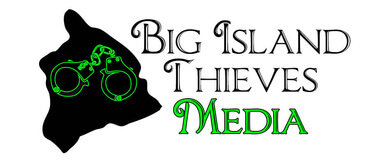
In a letter released by the Hawaiʻi Department of Agriculture today. Jonathan Ho acting manager of The Hawaii Department of Agriculture Plant (Quarantine Branch) Proposes Administrative Rules in hopes to stop the spread of Coffee Leaf Rust Further in the State of Hawaiʻi.
The follwing is a copy of the letter.:
SUBJECT: Board of Agriculture Review of Proposed Expansion of Coffee Leaf Rust, Hemileia vastatrix, Infested Areas to Include the Islands of Lanai and Oahu to Restrict the Movement of Coffee Plants (Coffea arabica, C. canephora and other Coffea spp. Including Hybrids and Varietals) and Plant Parts Such as Green Beans, Fruits, Leaves, Stems, Twigs, Cuttings, Wood, Logs, and Mulch or Greenwaste, Used Coffee-Related Packing Materials Such as Coffee Bags, and Any Previously-Used Equipment Used to Harvest, Transport, or Process Coffee Plants or Plant Parts, to Prevent the Spread of the Coffee Leaf Rust.
This letter is to inform you that on March 23, 2021, the Board of Agriculture (Board) will review and may take action on a proposal from the Hawaii Department of Agriculture (HDOA), Plant Quarantine Branch (PQB) to expand the designated coffee leaf rust (CLR), Hemileia vastatrix, infested areas in the State, currently Maui and Hawaii Island, to include the entire islands of Lanai and Oahu. The Board’s designation of the islands of Lanai and Oahu as CLR-infested areas will authorize the PQB to implement quarantine measures to restrict the movement of coffee plants and plant parts and other CLR hosts from Maui, Hawaii Island, Lanai, and Oahu.
PQB’s Plant Intrastate Rules in section 4-72-4.5(a), Hawaii Administrative Rules, authorize the Board to expand the area of infestation designated by interim rule to include a newly infested area, subject to certain procedural requirements, in order to implement quarantine measures to prevent further spread of CLR through its plant or commodity hosts from the designated expanded area of infestation to restricted (non-infested) areas.
On October 21, 2020, leaf samples displaying CLR symptoms from managed coffee plants in the Haiku area of Maui were turned in to Maui HDOA staff. Subsequent surveys on Maui conducted after the initial detection found plants with symptoms at five additional locations, including wild coffee. Samples were submitted to U.S. Department of Agriculture (USDA) National Identification Services (NIS) for identification confirmation. The USDA NIS confirmed the identification as CLR, H. vastatrix, on October 29th.
On October 26, 2020, HDOA staff found a coffee plant suspected to be infected with CLR on the east side of Hawaii Island. On October 31, 2020, University of Hawaii-College of Tropical Agriculture and Human Resources staff received a report of CLR on the west side of Hawaii Island. On November 10, 2020, HDOA was notified that USDA, NIS determined the East Hawaii Island samples were negative for CLR; however, they confirmed the West Hawaii samples as positive.
On November 20, 2020, Plant Quarantine Interim Rule 20-1 went into effect. A copy of the original interim rule is enclosed as Appendix A.
In early January 2021, HDOA received notification of possible CLR on the island of Lanai. On January 22, 2021, HDOA received confirmation from USDA NIS that the samples from Lanai were CLR.
On January 25, 2021, a location in Maunawili, Oahu submitted samples of possible CLR collected on property. On February 5, 2021, USDA NIS confirmed the presence of CLR.
On February 2, 2021, samples were collected from Lyon Arboretum, located in Manoa, Oahu, of possible CLR. Samples were submitted to USDA, APHIS, ARS in Hilo, Hawaii for confirmation. On February 9th, samples were confirmed by USDA NIS to be CLR.
If the Board designates the islands of Lanai and Oahu as expanded CLR infested areas, coffee and related CLR host material from Lanai and Oahu will be subject to the quarantine restrictions specified in Plant Quarantine Interim Rule 20-1. These quarantine measures restrict the movement of coffee plants and plant parts, used coffee-related packing materials, and previously-used equipment used to harvest, transport, or process coffee plants or plant parts, from a quarantined area to a non-infested area.
The attached quarantine restrictions as stated in PQB Interim Rule 20-1, are the same as those which have been in effect for coffee from Maui and Hawaii Island since November 20, 2020. The quarantine restrictions require a permit from HDOA to transport coffee plants and plant parts, used coffee-related packing materials, and previously-used equipment used to harvest, transport, or process coffee plants or plant parts from a CLR-infested island or area to non-infested islands or areas to prevent CLR movement. The interim rules also require mitigation and decontamination measures by the permittee and inspection by HDOA PQB inspectors prior to shipping. Inspectors will either attach a tag, label, or stamp to indicate the shipment passes inspection requirements. A copy of the proposed interim with expanded quarantine areas of Lanai and Oahu is enclosed as Attachment B.
If you need more information about the quarantine or permit requirements, please call
Mr. Lance Sakaino, PQB Plant Specialist, at (808) 832-0566 or email: Lance.S.Sakaino@hawaii.gov.
Sincerely,
Jonathan Ho, Acting Manager
Plant Quarantine Branch
Hawaii Department of Agriculture
Appendix A – PQ Interim Rule 20-1
Appendix B – PQ Interim Rule 20-1 with Lanai and Oahu expanded quarantine zones




